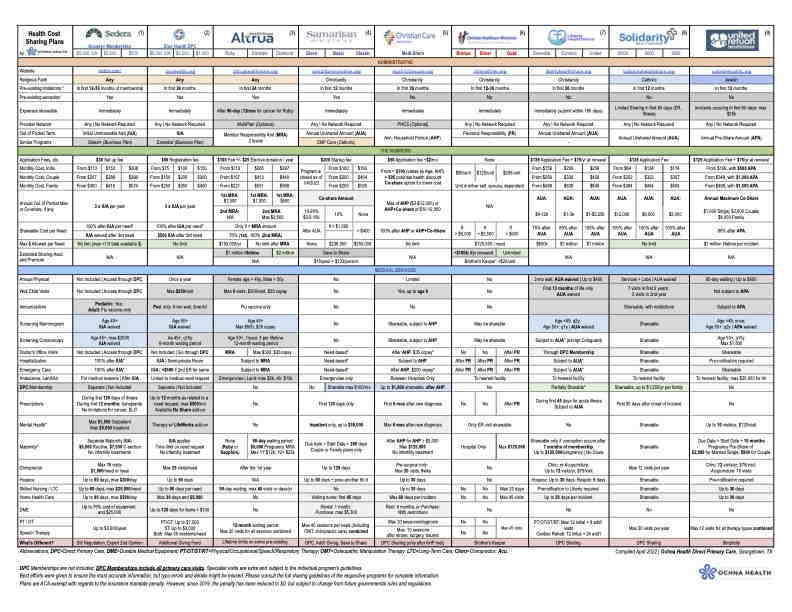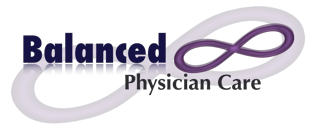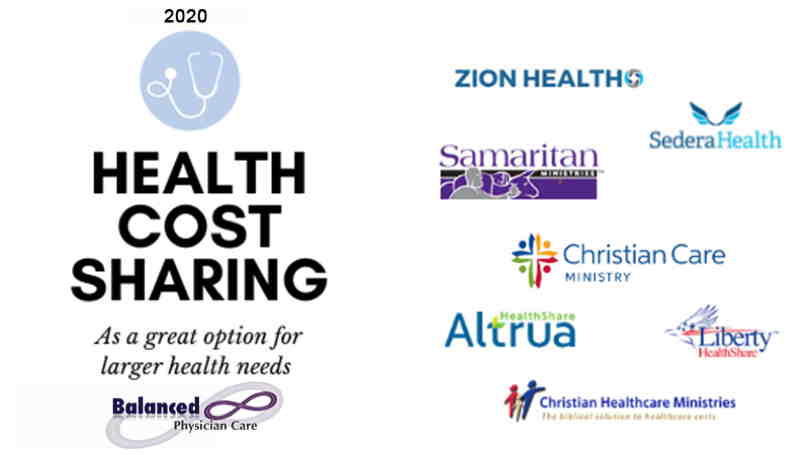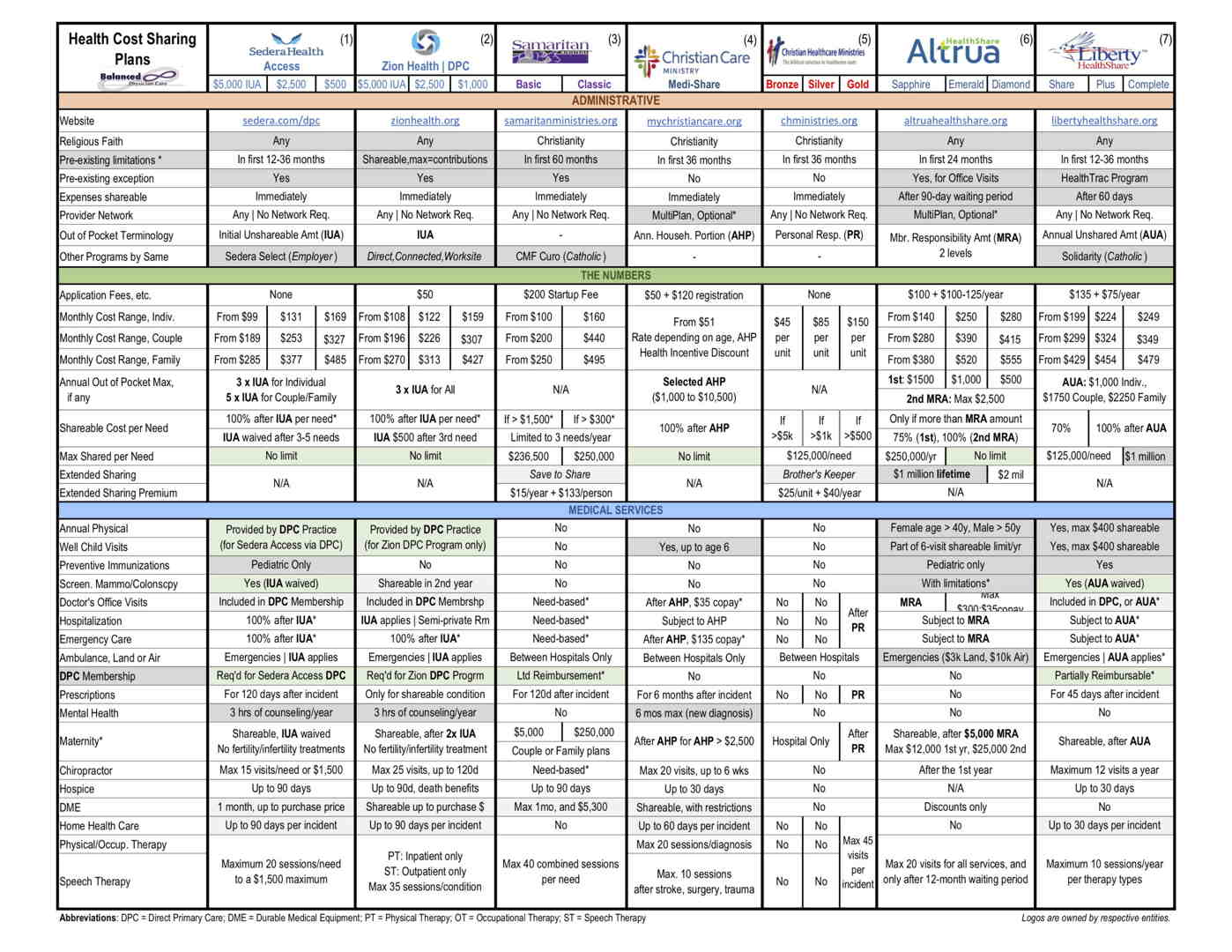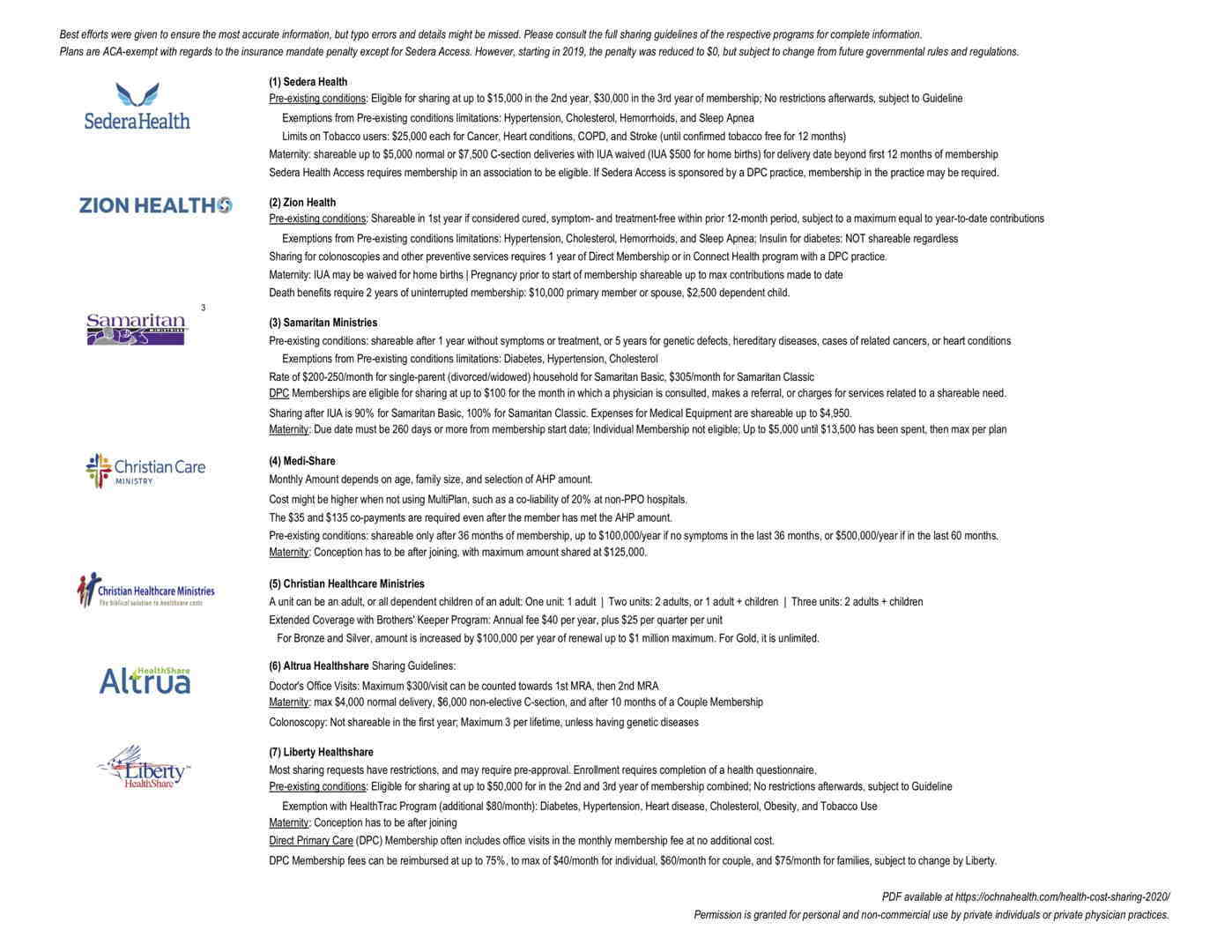Medical Cost Sharing Guide for 2022
The very concept for and purpose of insurance is to protect one against unpredictable and large expenses, such as damage to your vehicle from an accident, or to your home from a hurricane. In health care where there is virtually no transparency, most health care costs are purposedly unknown, falsely creating a need for insurance for even routine care. Charges are frequently inflated, and “discounts” off these inflated charges by health care facilities are advertised by insurance companies as evidence that they are working on your behalf to get your value and savings for your insurance plan.
The Direct Primary Care (DPC) memberhsip model absolves the need for insurance for non-emergency care, from physician consultations to ancillary services, such as laboratory and radiology services. All costs are transparent, affordable and predictable with the all-inclusive monthly membership. Various private surgical groups are now publishing all-inclusive non-emergency surgical procedures so insurance is even not needed for them.
The DPC model allows members to purchase insurance or other plans purely for catastrophic needs at a much lower cost by forgoing inclusion of routine care in their plans. Unless you have chronic medical conditions that truly require the care of a specialist physician and expensive medications (about 15% of you), a health cost sharing plan may be just what you need. These programs dovetail with a DPC membership perfectly, at a combined cost that is usually half of traditional insurance offerings.
